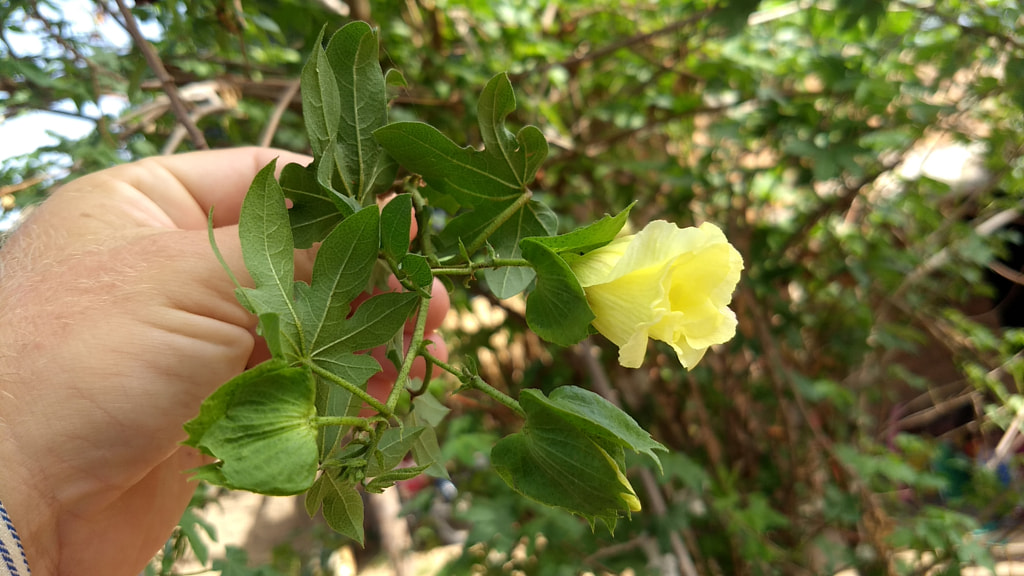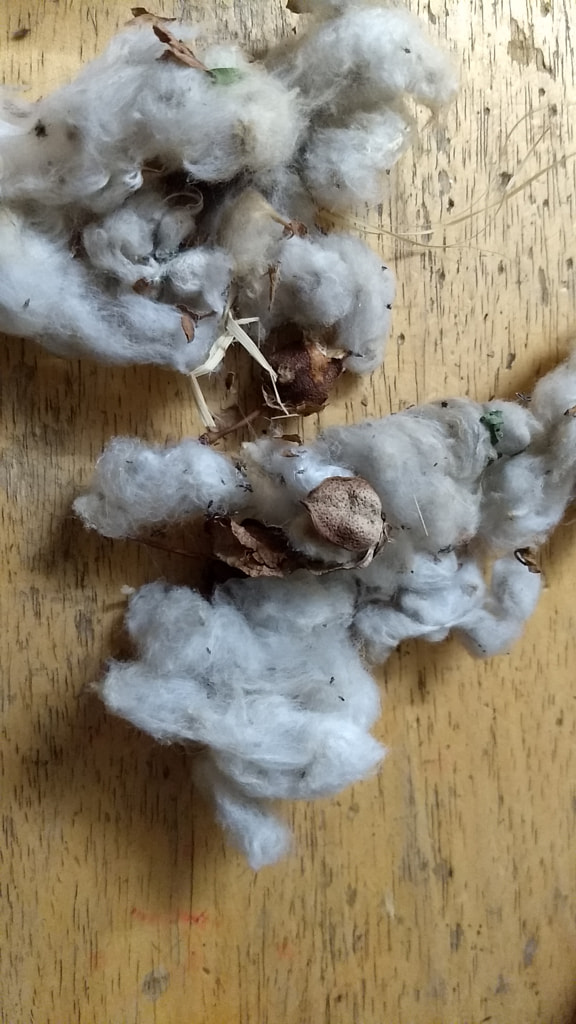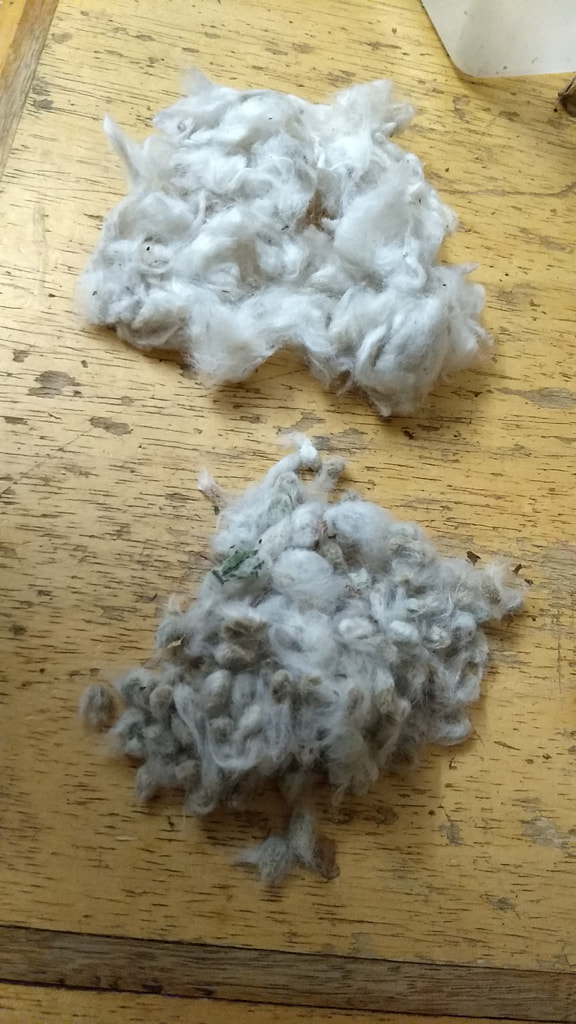I have been looking for it for years, and just this week I walked into my friend's yard and there it was: the traditional Bagirmi cotton bush. You can see in the photos below that the leaves are smaller and more "fingery" than commercial cotton

and the fibers are more coarse.

It is the variety grown by this African tribe for millenia. It has now all but dissappeared, replaced by the cotton that colonialists introduced. But it shall survive! I have gathered the little pile of seeds pictured below and will plant them. Any tips on best practice to ensure good germination would be welcome.

Otherwise, well, it's as native as it gets.







